Samaaro + Your CRM: Zero Integration Fee for Annual Sign-Ups Until 30 June, 2025
- 00Days
- 00Hrs
- 00Min
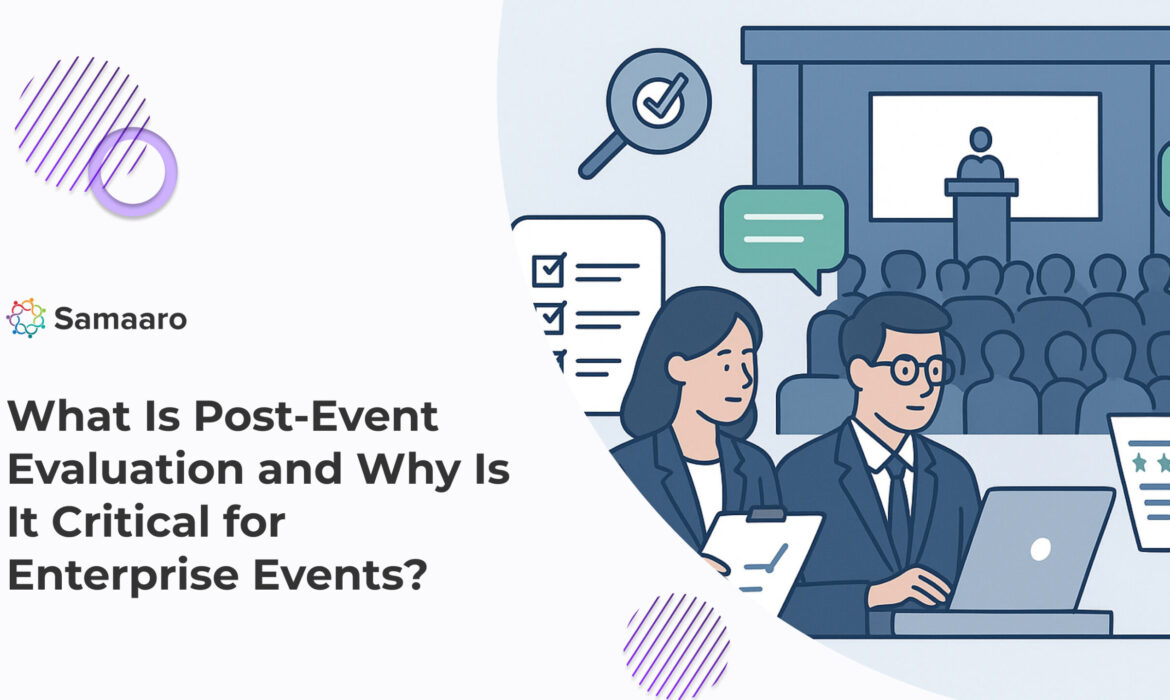
When the closing keynote ends and the last booth is packed up, most people think the event is in the rearview mirror. The energy shifts; the team celebrates; the metrics, registration figures, attendance numbers, social chatter, start getting circulated on internal channels. For many organizations, this is where the story ends.
For enterprises, however, the heavy lifting is just beginning.
Events may represent one of the largest line items in an enterprise marketing budget. Between venue, sponsorships, technology, accommodation, and travel, one flagship event can represent crores in investment. Still, event teams too often cannot articulate how those investments translate into measurable business impact.
This is why post event evaluation is not just a box to tick, it’s a necessity. It helps turn an event from a one-time experience into a repeatable, scalable, and strategic growth engine. When done well, an evaluation will provide an enterprise with the perspective to refine targeting, improve execution, and demonstrate ROI back to leadership.
In this blog, we’re going to explain what post-event evaluation entails, why it matters so much for enterprise events, and how to develop evaluation processes that turn a flurry of activity into actionable strategy.
It is tempting to evaluate success based on how busy the venue felt or how many tweets were sent out. For teams that have invested long hours, these energizing moments can feel like validation.
But while these surface-level markers might deliver a short moment of joy, they will never provide insight into whether an event met its business objectives. For instance:
These examples demonstrate a reality: an event can look good but not be strategically good. Post-event evaluations allow enterprises to look at the value not just with the “closing moment” but the longer-term value.
Post-event evaluation is a systematic and data-driven assessment of the outcomes of an event against its intended objectives. It is much more than just a report of what occurred; it is also, an assessment of an understanding of why it occurred and what next steps will be.
This is an important distinction. Reporting is good for ticking boxes. Evaluation develops strategy.
When events are part of enterprise with larger budgets, greater scrutiny of event impacts is critical. There will be no future events if evaluation does not happen. Evaluation is the evidence to provide credibility to event marketing at the boardroom level.
Enterprises usually work on a scale where mistakes are costly, and victories must take place time and time again. For three reasons post-event evaluation becomes essential:
Unlike smaller organizations, enterprises attach themselves where sponsorship support exists, multi-team collaboration events, also known as C-suite engagement events, tend to be very visible. However, without evaluation there is a risk of reputational damage and wasted time.
Businesses are always required to justify their marketing spends. Digital channels like paid advertising and ABM platforms provide instant insights to evaluate ROI. If the evaluation of other forms of marketing provides no actionable, actionable insight, and/or things to improve, they’re likely to be deprioritize by the budget. Evaluation is how events remain competitive to be able to improve.
Businesses do not run single events but conduct programs over several quarters and geographic areas. Your learning from one event must inform the next. Evaluation helps to best ensure the knowledge is not reset every time an event is run.
Example:
In a series of roadshows across APAC, a leading B2B SaaS company experienced strong registration rates leading up to their early roadshows, but high no-show rates. When they reviewed their post-event evaluations, they learnt the timing of their events coincided with regional holidays. By adjusting the timing of a few subsequent events, they reduced their no-show rates by 30%, providing a relevant ROI improvement.
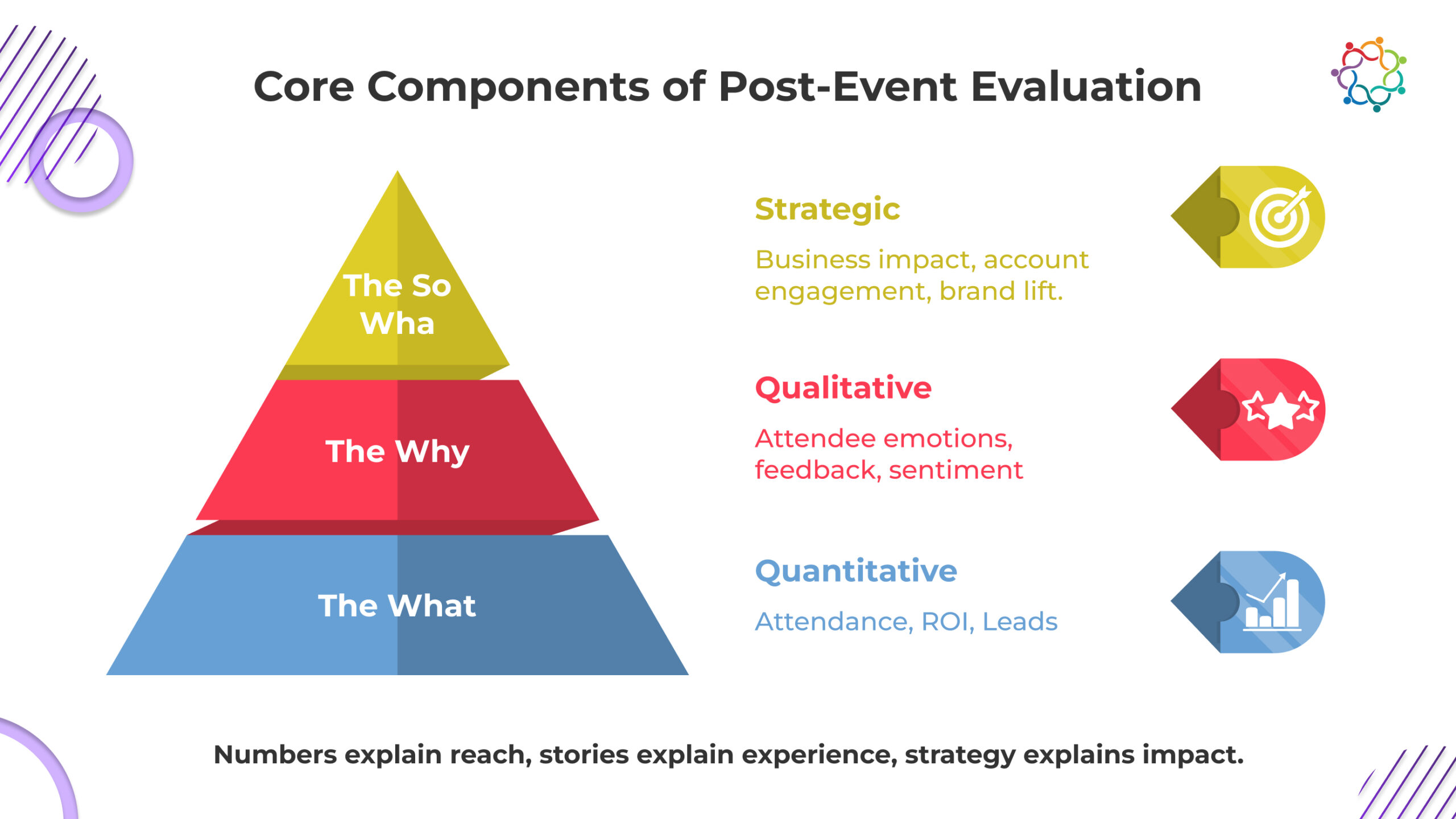
Robust evaluation draws on three types of data: quantitative, qualitative, and strategic. Each adds a layer of clarity enterprises need to form the full picture.
Quantitative data measures scale, efficiency, and outcomes in absolute terms.
Qualitative data captures the emotions, perceptions, and stories that explain attendee behavior.
Strategic data connects event outcomes to enterprise goals.
Together, these three layers prevent enterprises from being misled by vanity metrics. Instead, they build a multi-dimensional narrative of success.
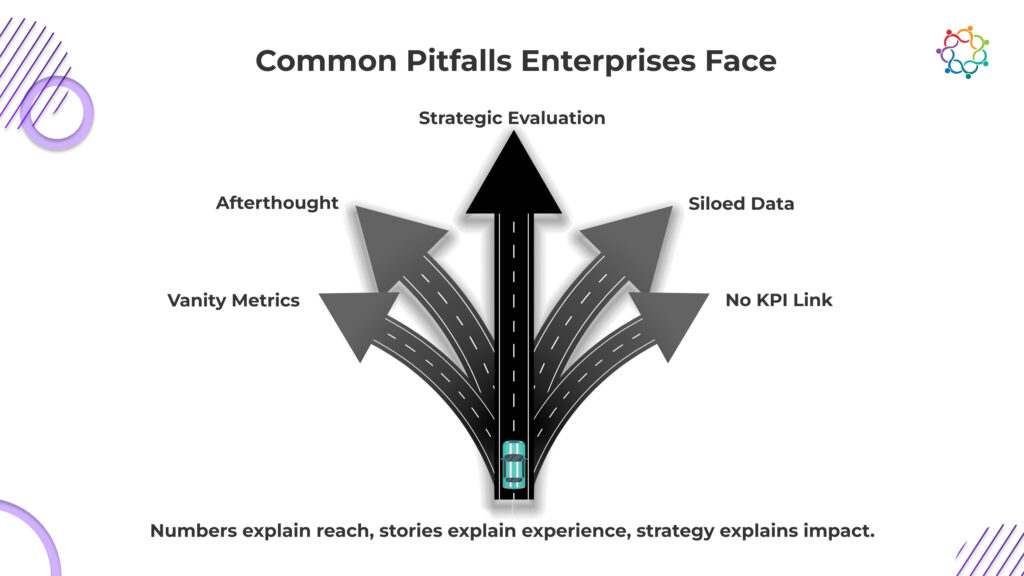
Even sophisticated teams struggle with evaluation. Common pitfalls include:
Example: A global consultancy celebrated “strong brand awareness” after an event, citing thousands of impressions on LinkedIn. But without evidence of how impressions translated into leads or deals, the claim carried little weight with executives.
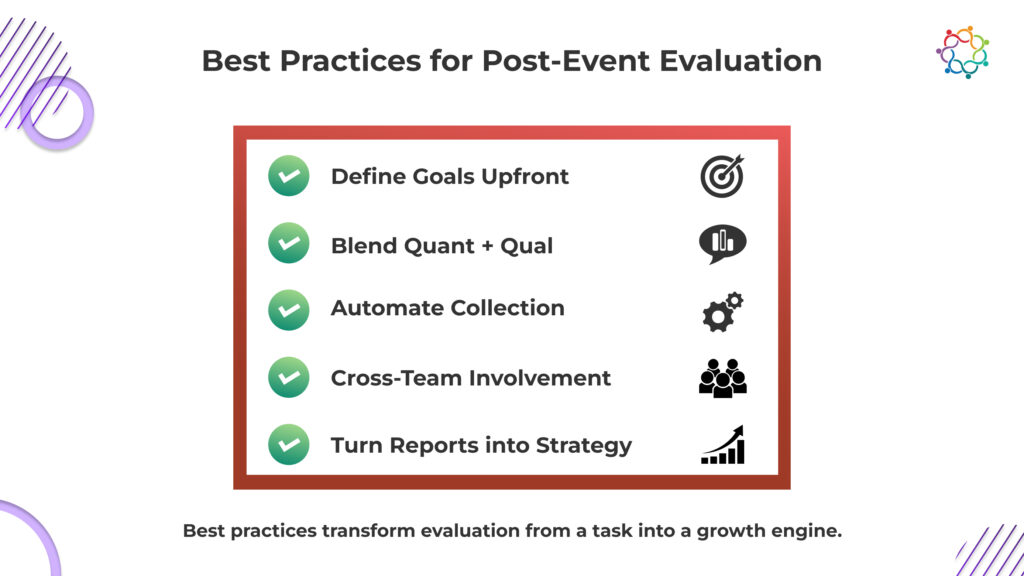
Enterprises that successfully do evaluations have some or all these best practices in common:
KPIs must be determined before sending out the invites. For example: is the event based around building pipeline, building thought leadership, or building deeper relationships with existing clients?
You don’t have to choose between using numbers or stories only. Using both ensures measurement and actioning of insights.
Manual and random statements are time-consuming and prone to error and misinterpretation. Having tools in place through CRM syncing, automating surveys and tracking engagements reduces friction for data collection.
When sales, marketing and operations evaluate post-event together, the insights gathered become richer and potentially more actionable. For example, sales may point out to marketing that they created some leads and prospects from an event, but the leads generated weren’t decision-makers. Operations teams will rarely get that insight through marketing metrics alone.
Your evaluation should not still be tied to your event unless you ended your evaluation with a clear list of recommendations: which channels were most effective, which personas were most engaged, and what needs to be fixed. You will apply these insights to the planning for the n
Samaaro provides the tools enterprises need to streamline evaluation:
For enterprise teams, Samaaro doesn’t just collect numbers, it integrates quant, qual, and strategic insights into a single framework.
Post-event evaluation is not just a task to complete. It should be both the strategic parameter that enables an event to convert from a stand-alone activity to a connector of growth.
While the closing session may signal the end of the event, evaluation begins the impact and at the same time signals the beginning of your next one.

Built for modern marketing teams, Samaaro’s AI-powered event-tech platform helps you run events more efficiently, reduce manual work, engage attendees, capture qualified leads and gain real-time visibility into your events’ performance.
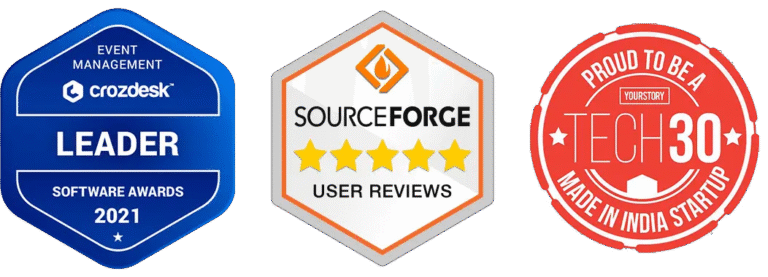
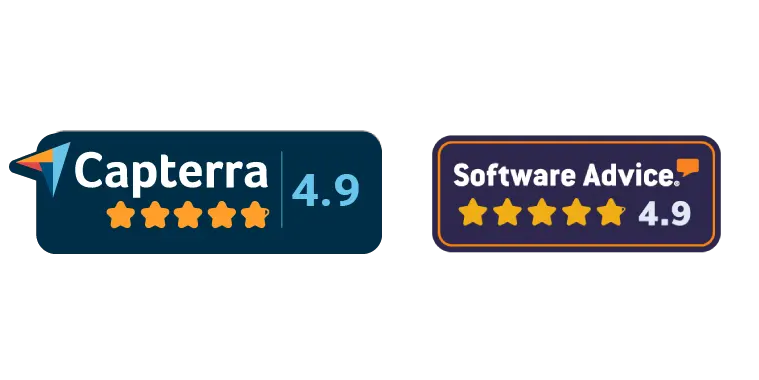
© 2025 — Samaaro. All Rights Reserved.